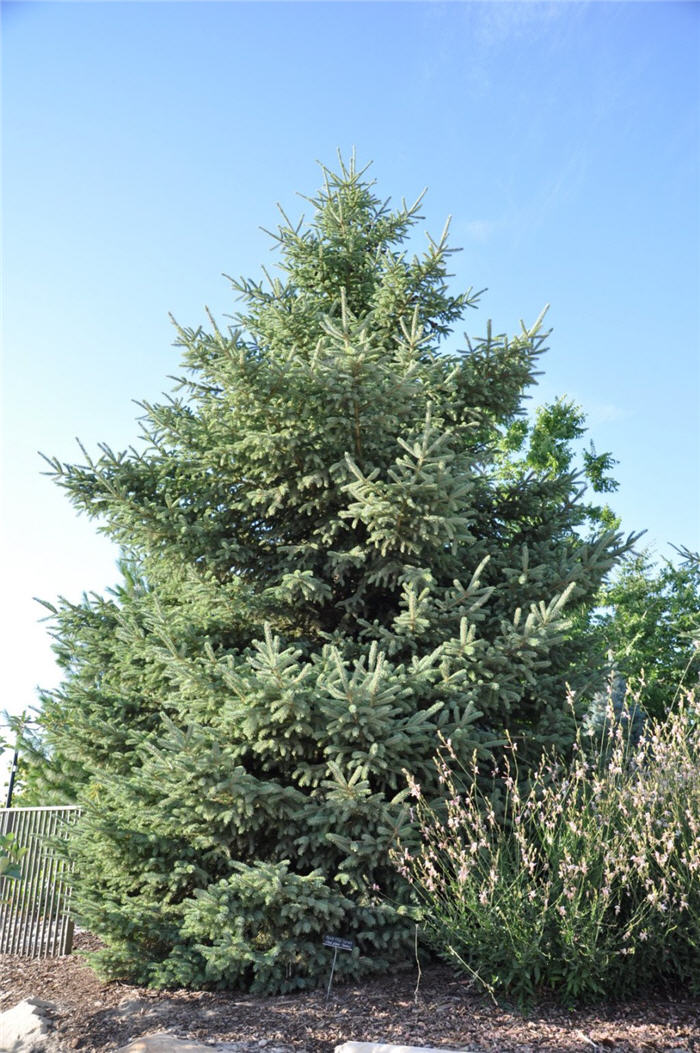| Botanical Name: Picea glauca 'Densata' | |
| Common Name: Black Hills Spruce |

-
Anatomy
-
Culture
-
Design
Plant Type
Tree, Conifer
Height Range
12-25', 25-40'
Flower Color
n/a
Flower Season
n/a
Leaf Color
Green, Blue Green, Dark Green
Bark Color
Brown, Grey
Fruit Color
Brown
Fruit Season
Winter, Fall
Sun
Full
Water
Medium
Growth Rate
Moderate, Slow
Soil Type
Clay, Loam, Rocky
Soil Condition
Average, Rich, Poor, Well-drained, Dry
Soil pH
Neutral
Adverse Factors
n/a
Design Styles
Formal, Meadow, Ranch, Woodland
Accenting Features
Silhouette
Seasonal Interest
Winter, Fall
Location Uses
Background, Shrub Border, Foundation, Patio, Walls / Fences
Special Uses
Screen, Wind Break, Small Spaces
Attracts Wildlife
n/a
Information by: Stephanie Duer
Photographer:
Photographer:
-
Description
-
Notes
Black Hills Spruce is an attractive, dense, symmetrically pyramidal evergreen tree that slowly grows to 20 to 25 feet tall and 10 to 12 feet wide, making it one of the few non-dwarf spruce varieties well suited to smaller landscapes. New needles are bright green, darkening to a blue-black-green. Cones are smallish.
Plant in full sun and well drained soil; prefers clay to loamy-clay soils. Though tolerant of some drought, in our valley elevations, it will grow better and more attractively if it is irrigated regularly, particularly in dry springs and autumns.